
Journal of Homotopy and Related Structures
Scope & Guideline
Charting New Territories in Mathematical Relationships
Introduction
Aims and Scopes
- Homotopy Theory and Algebraic Topology:
The journal focuses extensively on homotopy theory, examining its fundamental principles, structures, and applications in algebraic topology. This includes studies on homotopy types, homological algebra, and the relationships between different topological spaces. - Higher Category Theory:
A significant area of interest is higher category theory, where researchers explore (∞,1)-categories, their properties, and their implications for homotopy theory. This includes the study of simplicial sets, model categories, and enriched category theory. - Algebraic Structures and Computations:
The journal also covers research on various algebraic structures, such as L∞-algebras, associative algebras, and K-theory, with an emphasis on computational methods and theoretical advancements in these areas. - Geometric and Topological Applications:
Papers often explore geometric aspects of homotopy theory, including applications to diffeology, smooth manifolds, and foliations, highlighting the connections between abstract theory and geometric intuition. - Interdisciplinary Connections:
The journal encourages research that bridges homotopy theory with other mathematical fields, such as representation theory, algebraic geometry, and mathematical physics, fostering a rich dialogue between these disciplines.
Trending and Emerging
- Diffeology and Smooth Structures:
There is a growing interest in diffeological spaces and their applications in smooth geometry and homotopy theory. This theme reflects an increased focus on understanding smooth structures in a more flexible and generalized context. - Twisted Cohomology and Homotopy Theory:
Emerging research on twisted cohomology theories and their connections to homotopy theory suggests a trend towards exploring more nuanced algebraic structures that can capture complex phenomena in topology and algebra. - Infinity-Categories and Higher Algebra:
The exploration of (∞,1)-categories and higher algebra is gaining traction, indicating a shift towards more sophisticated categorical frameworks that provide deeper insights into homotopy theory and its applications. - Applications in Mathematical Physics:
There is an increasing trend of papers connecting homotopy theory with mathematical physics, particularly in the context of topological field theories and string theory, highlighting the interdisciplinary nature of current research. - Computational Homotopy Theory:
Advances in computational techniques for homotopy theory, including the use of spectral sequences and computational homological algebra, are becoming more prominent, reflecting a growing demand for practical applications of theoretical insights.
Declining or Waning
- Classical Algebraic Topology:
Research focused solely on classical algebraic topology, such as basic homology and cohomology theories, appears to be waning. This may be due to the increasing complexity and sophistication of newer theories that integrate algebraic topology with homotopy theory. - Basic Model Categories:
Papers discussing foundational model category theory without the integration of higher categorical perspectives are less frequent. The field seems to be moving towards more advanced frameworks that incorporate higher-dimensional categories. - Elementary Homotopy Concepts:
There is a noticeable decrease in publications centered on elementary homotopy concepts. Researchers are increasingly exploring more complex structures and their interrelations, leading to a decline in interest in basic homotopy properties. - Traditional Representation Theory:
Traditional approaches to representation theory, which do not leverage modern homotopical methods, have seen reduced attention. The integration of homotopy theory with representation theory is becoming more prominent, overshadowing classical studies.
Similar Journals

RENDICONTI DEL SEMINARIO MATEMATICO DELLA UNIVERSITA DI PADOVA
Fostering a vibrant community of mathematical exploration and discovery.RENDICONTI DEL SEMINARIO MATEMATICO DELLA UNIVERSITA DI PADOVA, published by the European Mathematical Society, stands as a notable open-access journal with a rich history in disseminating research across various domains of mathematics. With an ISSN of 0041-8994 and E-ISSN 2240-2926, this journal has embraced open access since 2023, significantly enhancing its visibility and accessibility to a global audience. Situated in Germany, its publishing house is based at Technical University Berlin, which emphasizes its academic roots and dedication to fostering mathematical research. The journal features a quartile ranking of Q3 across multiple categories including Algebra and Number Theory, Analysis, Geometry and Topology, and Mathematical Physics as of 2023, indicating a vibrant contribution to the field, despite its challenge in specific rankings. Researchers, professionals, and students alike will find in this journal a platform for innovative ideas and significant findings that are crucial to the evolution of modern mathematics.
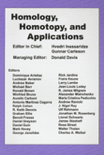
Homology Homotopy and Applications
Unlocking New Dimensions in Mathematical SciencesHomology Homotopy and Applications is a prestigious peer-reviewed journal published by INT PRESS BOSTON, INC, dedicated to advancing the field of mathematics, particularly within the realms of algebraic topology, homological algebra, and their applications. With an impressive Q1 classification in the mathematics category for the year 2023, this journal serves as a crucial platform for researchers, professionals, and students aiming to disseminate their findings in a rapidly evolving discipline. Although open access options are not currently available, the journal retains significant value with its rigorous selection process and high-impact studies. The journal invites submissions that explore theoretical developments as well as practical applications that bridge homology and homotopy theories, thus contributing to the broader scientific community from its base in the United States. With convergence covering years from 2001 to 2024, Homology Homotopy and Applications continues to be a vital resource for fresh insights and groundbreaking research in mathematical sciences.
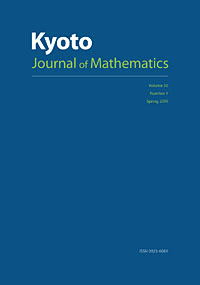
Kyoto Journal of Mathematics
Connecting minds, sharing knowledge, transforming mathematics.Kyoto Journal of Mathematics is a premier academic publication dedicated to advancing the field of mathematics, published by DUKE UNIVERSITY PRESS. Established in 1996, this journal serves as a vital platform for sharing innovative research and breakthrough studies across various mathematical disciplines. The journal has consistently maintained a prestigious Q1 ranking in the category of Mathematics (miscellaneous) as of 2023, reflecting its significant impact and contribution to the mathematical community. With its Open Access policy, the Kyoto Journal of Mathematics ensures that groundbreaking research is easily accessible to a global audience, fostering collaboration and knowledge dissemination among researchers, professionals, and students alike. The journal's commitment to excellence and relevance in mathematical research is underscored by its extensive archive of published works and its continuous engagement with contemporary mathematical challenges. This makes the journal an essential resource for anyone seeking to stay abreast of current trends and advancements in the field.
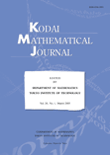
Kodai Mathematical Journal
Nurturing Insights in Diverse Mathematical RealmsKodai Mathematical Journal is a distinguished publication dedicated to advancing the field of mathematics, particularly in miscellaneous areas. Established in 1949, this esteemed journal has been a reputable source for researchers and practitioners who seek to contribute to the rich landscape of mathematical knowledge. Published by KINOKUNIYA CO LTD, the journal is based in the academic environment of Tokyo Institute of Technology and serves a global audience with rigorous and insightful research articles. Despite its current Q3 quartile ranking in the Scopus Mathematics category, which reflects its niche but impactful contributions, the journal is poised for growth; the convergence of traditional and novel mathematical techniques promises to enhance its relevance further. Researchers, professionals, and students are encouraged to engage with the rich content of the journal, aimed at fostering collaboration and nurturing innovation in the mathematical community. While currently not available as Open Access, Kodai Mathematical Journal remains a critical resource for those passionate about mathematics and its applications.

Forum of Mathematics Sigma
Connecting scholars through open access to cutting-edge research.Forum of Mathematics Sigma is a premier open access journal published by Cambridge University Press that has been at the forefront of mathematical research since its inception in 2013. With a strong emphasis on advancing the fields of mathematics, the journal consistently achieves Q1 rankings across multiple categories, including Algebra and Number Theory, Analysis, and Computational Mathematics. This distinction highlights its impact and relevance within the scholarly community. The journal prides itself on providing a platform for innovative research, fostering collaboration among researchers and practitioners across various mathematical disciplines. Open access publication ensures that cutting-edge findings are widely available to readers globally, enhancing the dissemination of knowledge. With an address in the heart of Cambridge, England, Forum of Mathematics Sigma is dedicated to promoting high-quality research and making significant contributions to the development of mathematics.
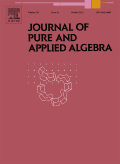
JOURNAL OF PURE AND APPLIED ALGEBRA
Innovating Algebra: Where Theory Meets ApplicationJOURNAL OF PURE AND APPLIED ALGEBRA, published by Elsevier, stands as a premier academic platform in the fields of algebra and number theory, boasting a distinguished impact factor that reflects its rigorous peer-review process and influential research contributions. Established in 1971 and continuing its impressive trajectory until 2025, this journal has carved a niche for itself by providing a forum for innovative studies, theoretical advancements, and practical applications within pure and applied algebra. With its prestigious Q1 ranking in Algebra and Number Theory, the journal not only ranks among the top tier in its category but also offers an extensive collection of research that caters to mathematicians, academicians, and students alike. Scholars will find it an invaluable resource for disseminating their findings, as well as keeping abreast of significant developments in the field, further solidifying its role as a cornerstone of mathematical research.
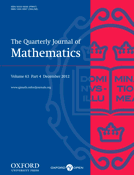
QUARTERLY JOURNAL OF MATHEMATICS
Empowering the Mathematical Community, One Quarter at a TimeQuarterly Journal of Mathematics, published by Oxford University Press, stands as a pivotal resource for the mathematical community, focusing on a broad spectrum of topics in the field of mathematics. With its esteemed history dating back to 1930, this journal continues to foster innovative research and discussions, providing a platform for scholars to share their findings and insights. Although the journal currently holds a Q3 classification in mathematics (miscellaneous) and is ranked #207 among general mathematics publications in the Scopus database, its commitment to quality and rigorous peer review ensures that it remains relevant and insightful. Researchers, professionals, and students alike will find the Quarterly Journal of Mathematics an invaluable tool for advancing knowledge and understanding in various mathematical disciplines, making it an essential addition to any academic library.
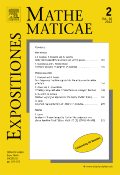
EXPOSITIONES MATHEMATICAE
Championing Excellence in Mathematical ScholarshipEXPOSITIONES MATHEMATICAE, published by Elsevier GmbH, stands as a significant journal in the realm of mathematics, catering primarily to researchers, professionals, and students. With an ISSN of 0723-0869 and an E-ISSN of 1878-0792, this journal has made its mark in the academic community, boasting a Q2 classification in the miscellaneous mathematics category for 2023, illustrating its prominence within its field. The journal addresses a diverse scope of mathematical topics, encouraging the publication of original research and innovative theories while maintaining rigorous academic standards. As it converges from 2004 to 2024, EXPOSITIONES MATHEMATICAE continues to be an essential resource for advancing mathematical knowledge and fostering scholarly communication, despite being a non-open-access publication. Its location in Munich, Germany further anchors it within a rich intellectual tradition, providing accessibility for the mathematical community worldwide.

COMPOSITIO MATHEMATICA
Connecting Ideas and Insights in Algebra and Number TheoryCOMPOSITIO MATHEMATICA, published by Cambridge University Press, is a leading journal in the field of mathematics, with a specific focus on algebra and number theory. With an impressive impact factor and ranked in the Q1 quartile for its category, it holds a prominent position in the academic landscape, currently standing at Rank #26 out of 119 journals in its field, within the 78th percentile of its category, according to Scopus rankings. Since its inception in 1996, the journal has been dedicated to publishing high-quality research articles that contribute significantly to the advancement of mathematical knowledge and theory. While it does not offer open access, the journal ensures a rigorous peer-review process that upholds the highest academic standards. Researchers, professionals, and students alike are encouraged to engage with the rich, innovative content of COMPOSITIO MATHEMATICA, which continues to foster a vibrant scholarly community dedicated to exploration and discovery in mathematics.

Algebraic and Geometric Topology
Connecting Algebraic Insights with Geometric PerspectivesAlgebraic and Geometric Topology, published by Geometry & Topology Publications, is a premier journal dedicated to the fields of algebraic and geometric topology. With its ISSN of 1472-2739 and a commendable Q1 ranking in 2023, this journal serves as a vital resource for top-tier research, showcasing groundbreaking developments and fostering discussions among mathematicians globally. Operating since 2007 and continuing through 2024, the journal is positioned within the United States and aims to deliver open access to the latest findings, promoting collaboration and innovation. As a significant contributor to the mathematical landscape, Algebraic and Geometric Topology appeals not only to researchers and professionals, but also to students eager to explore the rich interplay between algebra and topology, making it an essential read for anyone involved in advanced mathematical studies.